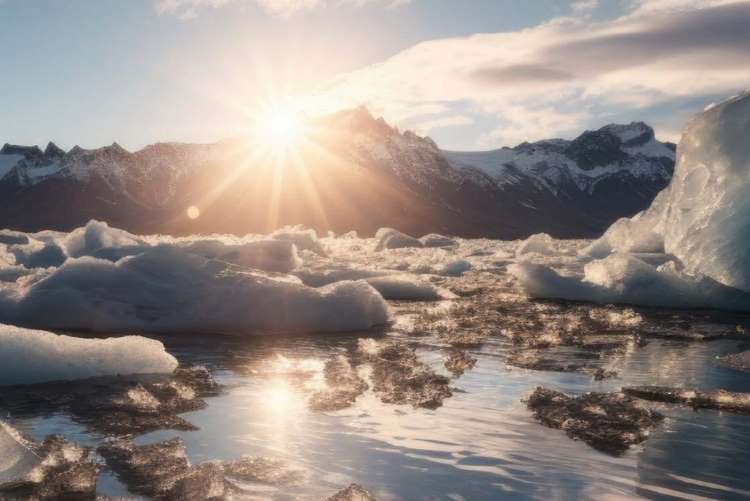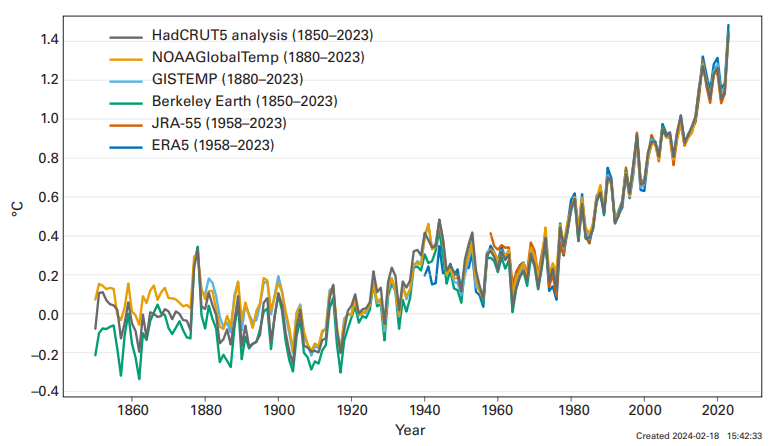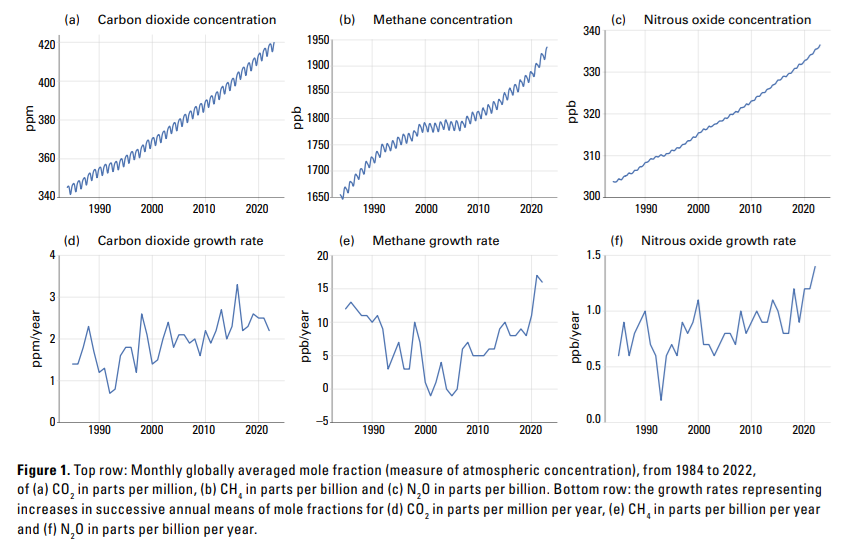
The World Meteorological Organisation’s State of the Global Climate report has warned that the world may be teetering on the precipice of irreversible change, marked by record-breaking heat, vanishing ice, and escalating greenhouse gas emissions. The findings of the report are a reflection of the fragility of the planet and the urgent need to safeguard its future. Using empirical data and scientific consensus, the report sounds out a red alert for humanity’s battle against climate change.
The year 2023 was one of climatic anomalies, with greenhouse gas concentrations piercing previous records, a surge in land and ocean temperatures, and unprecedented melting of glaciers and sea ice. This climatic convulsion led to an average temperature rise close to the 1.5°C warming threshold, a critical limit set by the Paris Agreement of 2015 for staving off the catastrophic impacts of climate change.
The Geneva-based WMO says 2024 may eclipse past temperature records, further denting the efforts to rein in global warming. This prediction is anchored in the aftermath of an El Niño event, which historically predicates a warmer globe. The recent rise in average temperatures shatters the illusion of a distant climate crisis, revealing a present-day crisis that demands immediate action.
READ I Climate change: Developing world faces unequal burden of economic costs
WMO report’s climate change signals
Amid the scientific discourse on rising temperatures and melting ice, the human narrative of the brunt of climate-induced adversities unfolds. Communities across the world reel under extreme weather events, with the less affluent shouldering a disproportionate share of the burden. The global economy, built on the precarious ledge of ecological stability, now teeters on the brink of a climate-induced recalibration. Job security, food supply chains, and the very fabric of urban and rural economies are linked to the whims of a warming planet.
Annual global mean temperature anomalies

Greenhouse gas concentrations

Oceanic torment was palpable in 2023, with over 90% of global waters experiencing heatwave conditions, disrupting marine ecosystems and the livelihoods tethered to them. The Antarctic sea ice receded to its lowest recorded extent, and glaciers surrendered their mass at an unprecedented rate.
The rise in greenhouse gas concentrations — carbon dioxide, methane, and nitrous oxide — has continued its climb, with levels reaching new records. These gases, the architects of our warming world, now stand at concentrations 150%, 264%, and 124% above their pre-industrial levels, respectively. This escalation not only attests to the unabated human footprint on the climate system but also to the dire need for a seismic shift in the global carbon emissions.
The rise in global temperatures reveals the imperative for a swift transition to renewable energy sources. Solar, wind, and hydroelectric power offer beacons of hope, promising a future where energy production aligns with ecological stewardship. The technological shift towards clean energy is not just an environmental mandate but a strategic economic pivot, essential for curbing the carbon emissions that fuel global warming. This transition, while daunting, heralds a new era of sustainable growth and innovation, unshackling societies from fossil fuel dependency.
The year 2023 was the warmest on record. This milestone, while scientifically significant, is a grim reminder of the relentless pace at which the planet is warming. The warmth permeated both land and sea, with record ocean temperatures contributing to a cascade of ecological disruptions and amplifying sea level rise, a symptom of global warming that threatens coastal communities worldwide.
The rising ocean temperature and acidity levels, a dual assault fuelled by the absorption of excess atmospheric CO2. This absorption, a temporary reprieve for the atmosphere, spells long-term calamity for marine ecosystems, heralding a future where the ocean’s bounty could dwindle significantly.
Another crisis is brewing with Arctic and Antarctic sea ice plummeting to historic lows. The Greenland Ice Sheet’s dwindling mass balance and the alarming thinning of glaciers globally serve as stark indicators of the rapid alterations our planet is undergoing. These changes mark transformative shifts that redefine the landscapes and ecosystems that have remained stable for millennia.
The message of the WMO report is unequivocal: the planet’s climatic equilibrium is unravelling at an alarming rate, far outpacing the global response to mitigate its impacts. The interplay of natural and anthropogenic factors is propelling our climate system into uncharted territories, with repercussions that transcend geographical and generational boundaries.
The global nature of climate change demands an equally global response, necessitating unprecedented levels of international cooperation. The nations must identify mutual goals and shared responsibilities, crafting policies that transcend borders in a common quest for climatic equilibrium. The Paris Agreement stands as a testament to what can be achieved when the world unites in purpose, but it also serves as a reminder of the bumpy road ahead.
